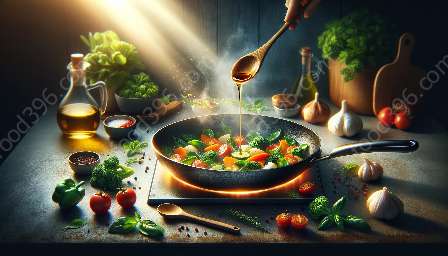Deglazing is a culinary technique that involves using a liquid to release the flavorful caramelized bits stuck to the bottom of a pan after sauteing, ultimately enhancing the flavor of a dish. This process is crucial in creating delicious and well-rounded flavors and is an important component of food preparation techniques.
The Importance of Deglazing in Cooking
Deglazing is a fundamental step in sauteing and other cooking methods, as it adds depth and complexity to a dish's flavor profile. When heat is applied to a pan during sauteing, the natural sugars in the ingredients caramelize, creating a rich and flavorful residue on the pan's surface. Deglazing not only aids in extracting and incorporating these delicious flavors back into the dish, but it also helps prevent burning and overcooking.
Techniques and Tips for Deglazing
There are several key techniques and tips for successful deglazing:
- Choose the Right Liquid: Common deglazing liquids include wine, broth, stock, or even water. The choice of liquid depends on the dish being prepared and personal preference.
- Use the Fond: The caramelized bits left behind in the pan, known as the 'fond,' are the key to successful deglazing. Scraping the fond and integrating it with the liquid is essential for building rich flavors.
- Adjust Heat: After adding the liquid, adjust the heat and use a wooden spoon or spatula to scrape up the fond, allowing it to dissolve and infuse the liquid with flavor.
- Reduce the Liquid: Let the liquid simmer and reduce, concentrating the flavors and creating a flavorful sauce to accompany the dish.
Deglazing and Sauteing
Deglazing is closely associated with sauteing, a cooking method that involves quickly cooking food in a minimal amount of fat over high heat, resulting in a flavorful and slightly caramelized exterior. Sauteing often leaves behind fond in the pan, making it the perfect opportunity for deglazing to extract and incorporate these caramelized flavors into the dish.
Enhancing Flavors and Creativity in Food Preparation
Deglazing is not only about enhancing flavors; it also provides an opportunity for creativity in food preparation. Experimenting with different liquids, seasonings, and ingredients while deglazing can lead to the creation of unique and delicious sauces and gravies that elevate the overall dining experience.

